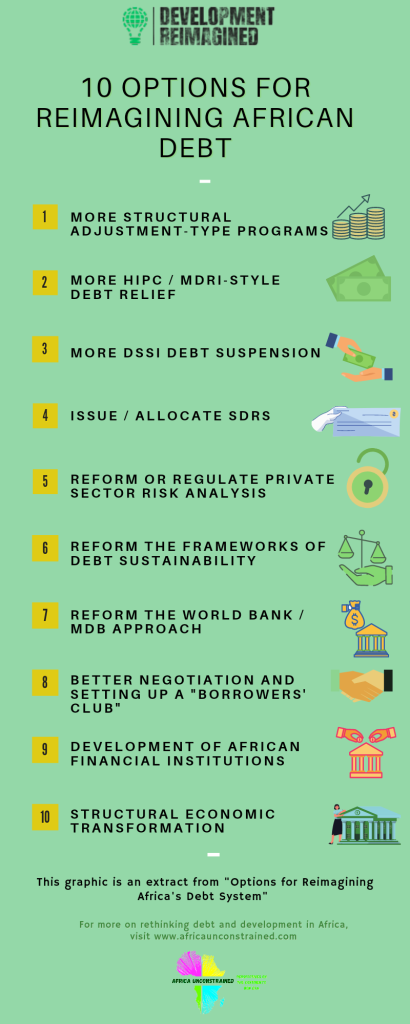As African countries continue to borrow billions of dollars internationally for a range of activities, including much-needed infrastructural development, in energy, transport, water and other sectors, servicing this debt can be challenging, and can hinder African countries’ fiscal space for other expenditure, such as regular social spending on education and health. The ongoing COVID-19 pandemic has pushed some African countries into debt crises, with reduced tax revenues due to, for example, the collapse of commodity prices and tourist arrivals. Simultaneously, government expenditure has increased, with pro poor policies to protect livelihoods and businesses from the impacts of COVID-19, as well as the new costs of PPE, medication and vaccines.
But this is all happening amidst existing development challenges, with huge, tens of billions of dollars per year financing gaps for infrastructure and SDG achievement. What’s the background of debt in Africa? How has COVID-19 impacted the situation? What solutions and methods are available?
To explore these critical questions, Development Reimagined has launched a new Flagship Report- “Options for Reimagining Africa’s Debt System”. The paper, part of the Africa Unconstrained series, presents ten “options” for African and other stakeholders to pursue going forwards – three previously utilised, and seven new.

The paper then utilises a newly created and innovative 5-part appraisal framework for assessing the “options” to methodologically and clearly provide recommendations to all stakeholders involved in the international debt system for how best to proceed going into the 2020s and beyond. Critically, this paper is written with African sustainable development and economic crisis avoidance the overarching long-term goal.

Using this bespoke, Africa-focused framework, the front runner options that emerge for the world to pursue together and for African stakeholders in particular to advocate emerge as improvements to negotiation capacity and coordination (Option 8), as well as reforms to debt sustainability frameworks (Option 6). Reform to private sector risk assessments (Option 5) also stands out, alongside further DSSI debt suspension (Option 3), while African financial institutional development (Option 9), despite feasibility challenges, and the issuance/reallocation of SDRs (Option 4) also score relatively highly.
The framework also suggests that structural adjustment-like austerity and privatisation programmes and policies (Option 1) are the least useful in ensuring long-term solutions to African debt challenges.
However, none of the options are mutually exclusive. They should be possible to work on in tandem, and in some cases can mutually reinforce each other, – for instance stronger coordination and SDR issuance.
Development Reimagined recently published a “Debt Guide”, as part of the Africa Unconstrained series of content on African growth, debt and perspectives, aiming to improve understanding of the topic. This Flagship Report builds on this knowledge and looks towards the future of debt in developing countries, with a focus on African countries
To find out more about how Development Reimagined can help you with thought-provoking research, contact our team at: clients@developmentreimagined.com
February 2021


